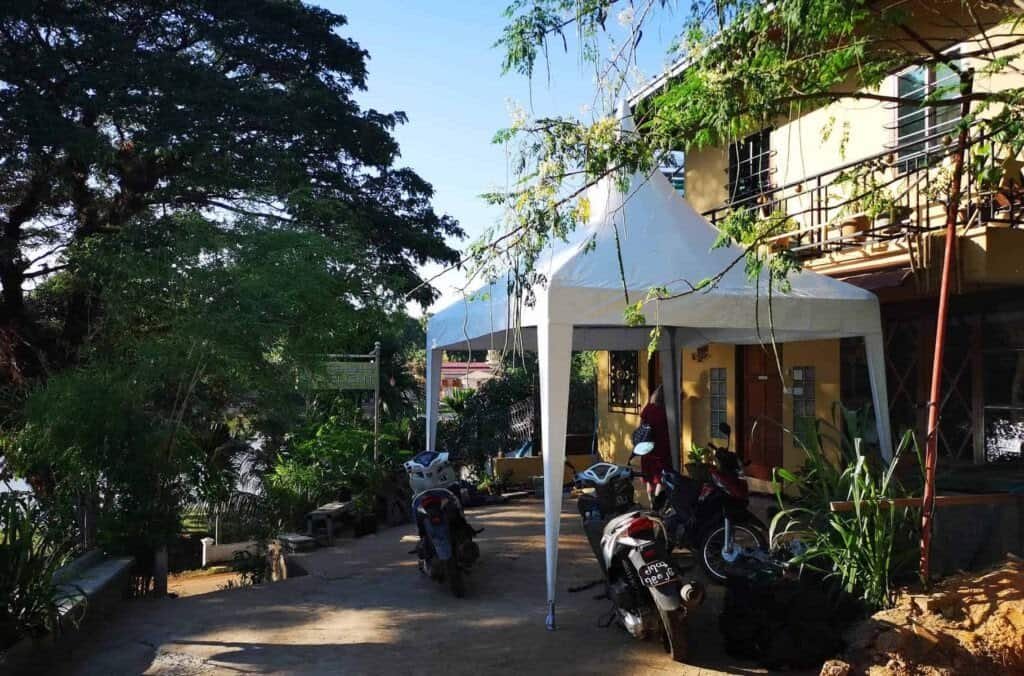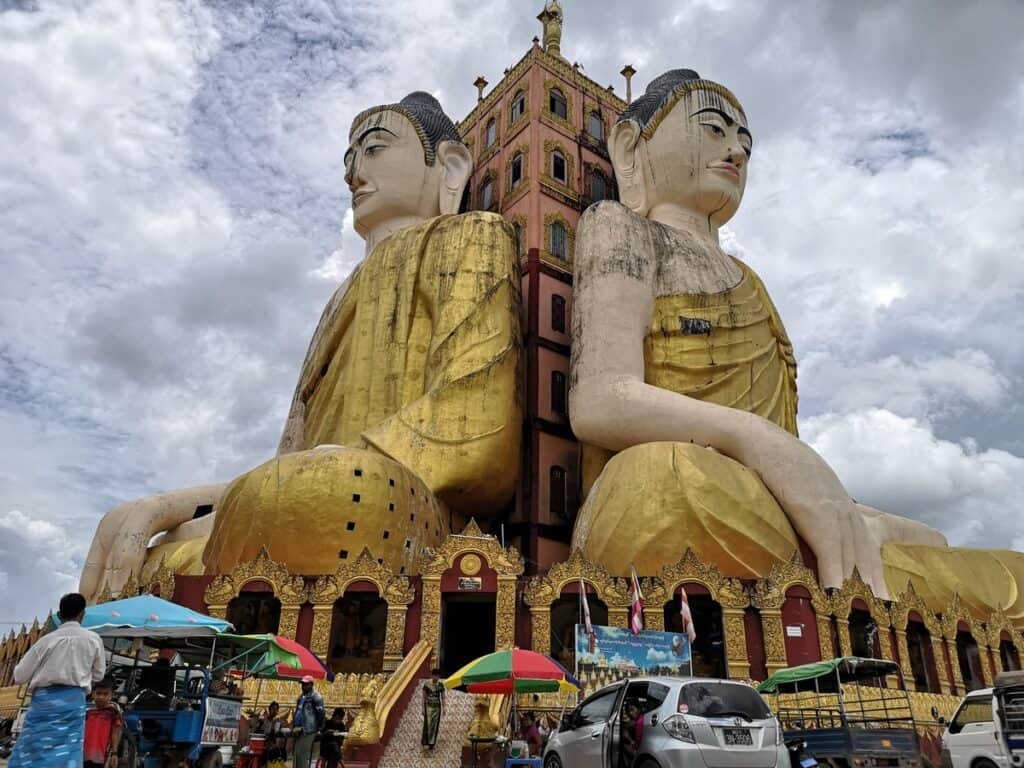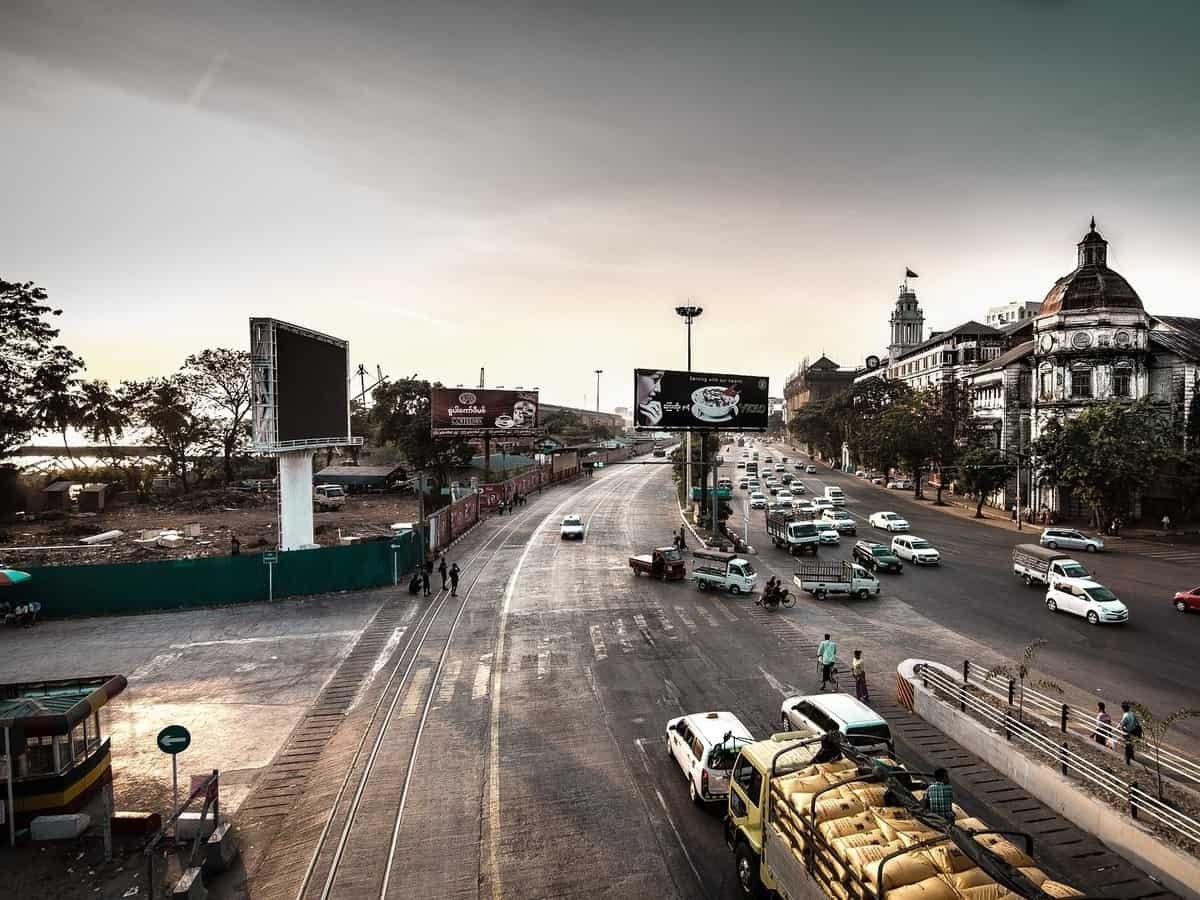Ye (pronounced Yay) is located about halfway between Mawlamyine, and Dawei.
Ye is a small riverside town in Burma’s Mon State, and due to fighting in the area, was closed to tourists until the end of 2013.
It is relatively untouched by tourism, and definitely off the beaten path, with most travelers sticking to the better-known sights in the North.
As it can be a little difficult to find information on it, we’ve written a short guide on the best ways to get there from Yangon, Hpa-An, or Mawlamyine.
The town is walkable but some of the attractions you might want to see are only accessible by motorbike, tuk-tuk, or car. You can hire a motorbike in town and it would be a great way to explore the region.
We looked at hiring one from our guesthouse but decided on a tuk-tuk as it was raining and I wasn’t quite comfortable riding in the rain.
There may not be as many things to do in Ye as there are in a big city like Yangon or a top tourist attraction like Old Bagan or Inle Lake – but that’s all part of its charm!


The town’s main pagoda is Shwe San Daw and is right in the middle of town. It’s most likely where you’ll be dropped off if coming in by bus. It’s hard to miss with its giant pinkish lions guarding the gates and some interesting looking Buddha images.
You can walk around the lake, and feed the fish; it’s a pleasant walk and doesn’t take too long. After a walk around the lake, you can visit the market down by the river with vendors selling a vast range of items, from fans, shoes, and clothes, to smelly dried fish!
A visit to the gold market (just west of the main market) is a must, even if just to talk to the friendly vendors.


The biggest sights in the area are out of town. Banana Mountain is north of Ye and you will need to ride your hired scooter or take a cheap tuk-tuk to get there.
Banana Mountain is an important monument for the people of Mon state and there are current works in progress to make it even larger.
The four enormous Buddha images stand nine stories high and are apparently the highest in Myanmar. Our tuk-tuk-driver-cum-guide walked us up countless stairs to the very top to see the magnificent views of the surrounding area.
We also walked through the temples on-site and visited the massive reclining Buddha.

BinLeWa beach is said to be quite local, with fishing boats lined up along the beach and some restaurants. There is a hill with a pagoda on top from which you can view the surrounding area.
It’s about a 45-minute drive from Ye to the west and you will have to go through Asin village to get there.
You can also visit Jaung Ywar village about 45 minutes out of town, and then a take a boat tour up the river through the jungle and visit a small Mon temple.
You can only enter the village and do the boat tour with a guide so speak to your hotel/hostel about organizing someone to take you there.
The longtail boat will cost you about 10,000 Kyats and the cost of the guide on top of that.
We went in the hot season and apparently you may need to get out and push the boat in some parts, but as Daniel had recently been to the Ye hospital and was supposed to keep his toe dry we opted out of this one.

Being a small town the restaurants generally close pretty early, so make sure you aim to eat dinner early to avoid being disappointed. Not all restaurants sell alcohol either but we did find one that is open until 11 pm with a full bar.
The street is not actually on Google maps but it is called Ok Smile Restaurant and it’s off the main street on the western side of the lake.
We stayed at Starlight Guesthouse (you can check out their current rates here). We were lucky enough to be invited by our host David to attend the English school where he teaches, and participate in one of the classes.
David is an American ex-pat whose wife is from the area and together they have been living in Ye since the tourism ban was lifted, and have been running the Guesthouse since then.

The English school runs seven nights a week and David, along with some of his prior students volunteer their time and share the teaching duties to an enthusiastic group of kids of all ages.






